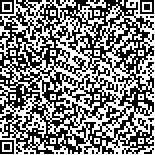| 乔 良,刘明艳,周 鹏,等.2014—2018年成都市龙泉驿区肺癌高危人群队列筛查结果及发病影响因素分析[J].中国肿瘤,2022,31(12):975-982. |
| 2014—2018年成都市龙泉驿区肺癌高危人群队列筛查结果及发病影响因素分析 |
| Analysis of Lung Cancer Screening Results and Incidence Influencing Factors of High-risk Cohort Population in Longquanyi District of Chengdu City, Sichuan Province from 2014 to 2018 |
| 投稿时间:2022-07-27 |
| DOI:10.11735/j.issn.1004-0242.2022.12.A006 |
|
 |
| 中文关键词: 肺癌 筛查 低剂量螺旋CT Poisson回归 四川 |
| 英文关键词:lung cancer screening low dose computed tomography(LDCT) Poisson regression Sichuan |
| 基金项目:国家重大公共卫生项目——肺癌早诊早治项目;四川省卫生健康委员会重点研究项目(19ZD017);四川省自然科学基金(2022NSFSC0640);四川省科普培训项目(2021JDKP0004) |
|
| 摘要点击次数: 996 |
| 全文下载次数: 276 |
| 中文摘要: |
| 摘 要:[目的] 分析2014—2018年四川省成都市龙泉驿区肺癌高危人群队列筛查结果及发病相关影响因素。[方法] 2014年4月至2018年7月,纳入年龄50~74岁,吸烟≥20包年(若现在已戒烟,戒烟时间不超过5年)者为调查对象,通过问卷调查收集调查对象的基本信息和危险因素,并对其开展每年1次的低剂量螺旋CT(LDCT)检查。首年筛查(基线筛查)阳性者按要求进入下一步检查,不需要行临床干预的阳性者及阴性者每年仍进行LDCT检查(年度复查)。通过主动随访,以及当地肿瘤随访登记、死因监测、病案首页系统被动匹配,获得筛查人群肺癌确诊、死亡等终点结局。计算不同特征人群的基线筛查、年度复查阳性率,并采用多因素Poisson回归分析肺癌发病的相关因素。[结果] 1 131名筛查人群平均年龄为(60.95±6.26)岁,男性(占95.58%)、小学及以下文化程度者(占41.11%)居多,吸烟量中位数为32包年。连续参加2、3、4、5轮筛查的随访率分别为83.27%、71.98%、63.60%和57.86%。基线筛查阳性率(9.11%)高于年度复查(6.15%)。年龄越大,基线筛查阳性率越高(P趋势=0.045)。吸烟量大(P趋势=0.002)、不使用抽油烟机(P=0.003)、既往有呼吸系统疾病史者(P=0.003)的年度复查阳性率高。 5年间,筛查队列肺癌发病密度为625.26/10万。多因素Poisson回归模型分析结果显示,与50~59岁组相比,60~69岁和70~74岁人群肺癌发病风险较高,IRR(95%CI)值分别为3.94(1.34~11.58)和4.90(1.11~21.67);与小学及以下文化程度、吸烟量20~29包年、基线筛查为阴性相比,高中或中专、吸烟量40~49包年、基线筛查结果为阳性人群的肺癌发病风险更高,IRR(95%CI)值分别为3.14(1.09~9.03)、4.29(1.30~14.16)和13.13(5.84~29.53);与仅参加1次筛查相比,参与3次和4次的人群肺癌发病风险的降低差异有统计学意义,IRR(95%CI)值分别为0.26(0.09~0.75)和0.21(0.07~0.63)。[结论] 基线筛查与年度复查阳性率及其影响因素不同;高危人群肺癌发病风险与LDCT基线筛查结果和筛查次数密切相关。 |
| 英文摘要: |
| Abstract: [Purpose] To analyze the results of lung cancer screening among the high-risk population in Longquanyi District of Chengdu City, Sichuan Province from 2014 to 2018 and explore the related influencing factors of lung cancer incidence. [Methods] From April 2014 to July 2018, 1 131 subjects aged 50~74 years old smoking more than 20 pack-years(or quiting smoking less than 5 years) were enrolled in screening. The basic demographic characteristics and risk factors of the subjects were collected through questionnaire survey, and low-dose CT(LDCT)examination was performed once a year. Individuals with a positive result in the first year of screening(baseline screening) were recommended to undergo diagnostic procedures; those with negative results or those with positive results but with no need of clinical intervention, were designated for the next round screening(annual screening). Information of confirmed diagnosis or death were obtained from follow-up,local cancer registry, death surveillance or medical record home page system during the five rounds of screening. The positive rate of baseline and annual screening among subjects with different characteristics were calculated. Multivariate Poisson regression were used to analyze the related factors of lung cancer incidence. [Results] The screening participants with a mean age of(60.95 ± 6.26) years old, males accounted for 95.58%, 41.11% of subjects with primary school education or below, and the median amount of smoking was 32 pack-years. The follow-up rates of individuals undergoing consecutively two rounds, three rounds, four rounds, and five rounds of LDCT screening were 83.27%,71.98%,63.60% and 57.86%, respectively. The positive rate of baseline screening(9.11%) was higher than that of annual screening(6.15%). Subjects with older age had higher positive rate of baseline screening(Ptrend=0.045). The positive rate of annual screening was related to the amount of smoking(Ptrend=0.002), the use of kitchen ventilator(P=0.003), and the history of respiratory diseases(P=0.003). During the five years, the incidence density of lung cancer in the screening subjects was 625.26/105. The results of multivariate Poisson regression model analysis showed that compared with the 50~59 year-old age group, the 60~69 year-old and 70~74 year-old age group had a higher risk of lung cancer, with IRR(95%CI) 3.94(1.34~11.58) and 4.90(1.11~21.67), respectively. The risk of lung cancer was higher in the participants with high school or technical secondary school education, smoking 40-pack-year, and positive baseline screening results, compared with those with primary school or below education, smoking 20~29 pack-years, and negative baseline screening results. The IRR(95%CI) were 3.14(1.09~9.03), 4.29(1.30~14.16) and 13.13(5.84~29.53), respectively. Compared with one round screening, the risk of lung cancer in the subjects with 3 or 4 rounds screening was significantly reduced, with the IRR(95%CI) of 0.26(0.09~0.75) and 0.21(0.07~0.63), respectively. [Conclusion] The positive rate and its influencing factors of baseline screening and annual screening are different. The risk of lung cancer in high-risk population is closely related to the results of LDCT baseline screening and the number of screening rounds. |
|
在线阅读
查看全文 查看/发表评论 下载PDF阅读器 |